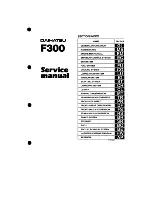
Status display
The current status of the runflat indicator can be
shown on the control display, for example
whether the runflat indicator is active.
1.
"Vehicle information"
2.
"Vehicle status"
3.
"Flat Tyre Monitor"
The status is displayed.
Initialising
On initialisation, the current tyre pressures are
stored as a reference for detection of a flat tyre.
The initialisation is started by confirming the
correct inflation pressures.
When driving with snow chains* fitted, do not
initialise the system.
1.
"Vehicle information"
2.
"Vehicle status"
3.
"Confirm tyre pressure"
4.
Start the engine – do not drive off.
5.
Start the initialisation with "Initialise tyre
pressure".
6.
Drive off.
Initialising is completed while the vehicle is in
motion; this process can be interrupted at any
time.
Initialising resumes automatically when you
continue your journey.
Indication of a flat tyre
The yellow warning light is illuminated.
A Check Control message is displayed.
There is a flat tyre or substantial loss of
tyre pressure.
1.
Reduce your speed and cautiously stop the
car. Avoid violent or sudden braking and
steering manoeuvres.
2.
Check whether the vehicle is equipped with
standard tyres* or run-flat tyres*.
The symbol identifying run-flat tyres, see
page
, is the circle with the letters RSC
on the tyre sidewall.
Do not continue a journey without run-flat
tyres
Do not continue your journey if the vehicle is not
equipped with run-flat tyres, otherwise a serious
accident could occur.◀
It is possible that Dynamic Stability Control DSC
is activated as soon as the message for a punc‐
ture appears.
What to do in the event of a flat tyre
Standard tyres*
1.
Identify the damaged tyre.
Do this by checking the air pressure in all
four tyres.
The tyre inflation pressure display of the
Mobility System, see page
, can be used
for this.
If it is not possible to identify, contact a Serv‐
ice centre.
2.
Fix the puncture with the Mobility System,
see page
Run-flat tyres*
If a tyre has punctured you can continue your
journey, driving at speeds up to a maximum of
80 km/h, 50 mph.
Continuing a journey with a flat tyre
If you continue a journey with a flat tyre:
1.
Avoid violent or sudden braking and steering
manoeuvres.
2.
Do not exceed a speed of 80 km/h, 50 mph
any longer.
3.
As soon as you get an opportunity, check
the tyre pressure in all four tyres.
Maximum possible distance with tyres entirely
deflated:
The possible distance with a flat tyre depends
on the load and strain on the vehicle during the
journey.
With a moderate vehicle load, the possible dis‐
tance travelled is approx. 80 km, 50 miles.
Seite 88
88
Online Edition for Part no. 01 40 2 607 643 - 07 11 490
Security
Summary of Contents for 116d 2011
Page 2: ......
Page 8: ...Online Edition for Part no 01 40 2 607 643 07 11 490 ...
Page 21: ...Online Edition for Part no 01 40 2 607 643 07 11 490 ...
Page 62: ...Online Edition for Part no 01 40 2 607 643 07 11 490 ...
Page 82: ...Online Edition for Part no 01 40 2 607 643 07 11 490 ...
Page 112: ...Online Edition for Part no 01 40 2 607 643 07 11 490 ...
















































